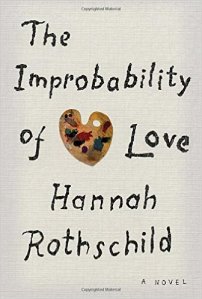 Want to know about the biological clock? It is a reading clock that starts ticking when you realize your own mortality. Nowadays I am fussy and cautious about committing to new books, though I loved the trendy literary novel of the summer, Emma Cline’s The Girls, thoroughly enjoyed Jo Walton’s science fiction novel based on Plato’s Republic, The Just City, and am relishing the Collected Poems of Adrienne Rich (1950-2013).
Want to know about the biological clock? It is a reading clock that starts ticking when you realize your own mortality. Nowadays I am fussy and cautious about committing to new books, though I loved the trendy literary novel of the summer, Emma Cline’s The Girls, thoroughly enjoyed Jo Walton’s science fiction novel based on Plato’s Republic, The Just City, and am relishing the Collected Poems of Adrienne Rich (1950-2013).
For every hour I spend on a second-rate book, however, I are depriving myself of an opportunity to read a classic. Reviews are often unreliable. How on earth does one find good new books?
By consulting the shortlist for this year’s Baileys Women’s Prize, I discovered Hannah Rothschild’s entertaining novel, The Improbability of Love. Though it is not perfect, I loved it! It is a fascinating story of the competition in the art world to acquire a lost painting by Watteau, “The Improbability of Love,”and prove its authenticity. This clever novel about establishing the provenance of art is slightly reminiscent of A. S. Byatt’s Possession.
The prologue opens on the night of the auction. Celebrity bidders, among them a rapper, a rich Russian thug in exile, and a savvy American widow, climb out of their limos and are snapped by the Paparazzi. As Earl Beachendon, the organizer of the auction, fantasizes about the money he will earn from his commission, a young Chinese man approaches the velvet-colored plinth in plain sight of the Earl and security cameras–and he and the painting vanish.
Then Rothschild pedals back six months in time to explore the mystery of the painting. The narrative is told from multiple points of view, and, delightfully, one of them is the painting itself. We are most interested in Annie, the central character, a chef who purchases the grimy Watteau in a junk shop, intending to give it to a lover who dumps her on his birthday by calling to cancel the meal she has spent all day cooking. Does she have any idea it is a Watteau? No. On a walk the next day, she discovers the junk shop has burned down.
And, ironically, she is the temporary chef for Memling Winkleman and his daughter Rebecca of Winkleman Fine Art, one of the most famous art houses in the world. They are desperately seeking “The Improbability of Love,” which Memling, a Jewish survivor of the camps, has acquired by shady means and stowed temporarily in the junk shop. Meanwhile, oblivious of their search, Annie parks the painting in a bag in the kitchen and researches recipes for a banquet centered on a newly-discovered painting by Caravaggio, “Judith Beheading Holofernes.” The Winklemans are inviting guests who may be interested in buying the painting. Although the surprisingly uncreative Rebecca requires fish every night and says she wants nothing fancy at the dinner party, Annie has decided to recreate a menu that “reflects the element of danger and brio” of Caravaggio and dishes that could have been eaten by cardinals, popes, and nobleman in post-Renaissance Italy.
Annie went to look at the painting, which was already hanging int he main vestibule of the gallery. It was an unappetizing image: a man’s throat cut, the blood spurting over a white cloth, his life ebbing away with each heartbeat; the perpetrator, a beautiful black-haired woman, looked at the viewer triumphantly, holding a bloody blade in her hand, watched by a wizened old hag. Fingering her letter of resignation, Annie decided there was little to lose by preparing a fantastical feast; at least she would be fired for something she was proud of.
Annie has problems: her mother, Evie, an alcoholic, temporarily moves in with her, and it is her flamboyance, taking the painting out of the bag at the Wallace Collection and holding it up beside some Watteaus, that attracts the attention of a painter working as a guide. He falls in love with Annie at first sight and helps her investigate the provenance of the painting with his contacts in the art world, historians, critics, and art experts.
There are intertwined stories of numerous characters who covet or are interested in the painting, including the collectors and an art expert who was fired by Winkleman for objecting to his selling art that was stolen by the Nazis. Here’s what we learn: don’t mess with the powerful dealers! Memling has a shocking secret, provenances are faked, and character assassination and even murder are coolly undertaken. But, in the end, this is more a comedy than a drama. All’s well that ends well.
Rothschild’s knowledge of art is impressive: she is the chair of the trustees of the National Gallery Board and a trustee of the Tate Gallery and Waddesdon Manor, as well as a documentary filmmaker.
A very enjoyable book!


Great review Kat! I’ve seen this book about a lot and was wondering whether it would be worth reading. And I know exactly what you mean about that ticking clock – every book I read I find myself considering if I want to commit whatever time I have left on this earth to!
LikeLike
I very much enjoyed this! I am fascinated by books set in the art worlds, but usually they’re about forgeries. Rothschild writes about problems I’ve never even considered.
LikeLiked by 1 person